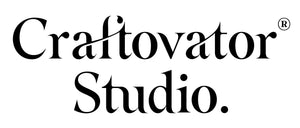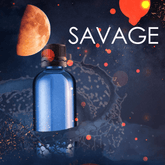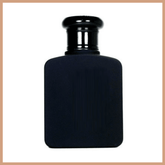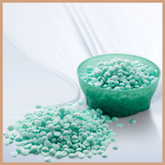How to Read an IFRA Document (and why you need to understand it!)
If you’ve ever wondered how to use an IFRA document or still struggle to understand some aspects, then we’re going to be helping you understand why it’s important if you’re making and/or selling products with fragrance oils.

The International Fragrance Association (IFRA for short) established a certificate of conformity for manufacturers to adhere to who create fragrances or fragrance blends. You may be wondering why this is important to you if you’re using fragrance oils in your candles, reed diffusers, soaps, or any other myriad of products they are used in.
We’ll be guiding you through the aspects of an IFRA document, helping you to understand why you need to take the IFRA into consideration when making certain products, the categories stated and the maximum usage levels for the fragrance oils you choose.
We hope this will alleviate some stresses or concerns you may have if reading IFRA documents is new to you. Once you know what to look for, reading an IFRA document will be a breeze!
What is an IFRA document?
The IFRA document simply sets the boundaries for safe usage levels of fragrances in a wide variety of products. Each fragrance’s specific chemical composition is worked out so that a safe usage level can be used in products. This takes into account the toxicity levels and any other restrictions necessary within each fragrance mixture.
Do I need to use an IFRA document?
Yes! Being able to know how to use an IFRA document is very important if you’re making home fragrance or cosmetic products, even if you’re simply making for yourself and not selling.
An IFRA document will be available for every fragrance oil you purchase and no two IFRA documents will be the same so it’s vital to download and keep a copy of this for yourself when purchasing a new fragrance oil so you can reference back to it as and when necessary.
Understanding each section of the IFRA document
So let’s take a better look at an IFRA document. We’ve used the IFRA download of our best-selling La Vie Est Belle fragrance oil as an example but this would apply to any fragrance oil IFRA you might be using on our website.
Issue Date and Version

This is the date the IFRA document was issued by the manufacturer to us, Craftovator, the supplier. This is found on every page within the IFRA document.
The version shows as a number and a date. Versions of IFRA’s change when necessary so these will always go up from 1, 2, 3 and so on as such changes are made. The date shown is when the version was issued by the manufacturer.
Certifying Party

The certifying party is the supplier from which the oil is purchased, in this instance, Craftovator.
Scope of the Certificate
The fragrance name that the IFRA document corresponds with.
Compulsory Information

Any other important information that needs addressing would be covered here. This usually covers implementations of higher amendments if and when necessary and gives dates these would come into effect.
This also contains the full table of categories showing the maximum usage percentages allowed for each product variation under the IFRA guidelines for the UK. All IFRA documentation is different so maximum usage levels will change per fragrance oil.
Not approved means that the fragrance hasn’t been specifically tested in that certain product category and so you shouldn’t use it for making such products.
Not limited means that the fragrance oil isn’t limited to a particular percentage however, you should only use the recommended amount for a product within that category or undertake sufficient testing if you’re unsure.
We’ll now look at the safe usage levels for the main 6 categories our customers tend to use the most using our La Vie Est Belle fragrance oil as our example.
Category 4: Perfume – IFRA maximum usage level 35.80% (Standard recommended maximum is 20% for EDP)
Category 5a, 5b, 5c: Leave on body products (body creams, face creams, hand lotion – IFRA maximum usage level between 3.73%-9.18% (Standard recommended maximum is 1%)
Category 9: Soap – IFRA maximum usage level 16% (Standard recommended maximum is 3%)
Category 10a: Reed diffusers – maximum usage level 16% (Standard recommended maximum is 25%, however, IFRA's maximum useage level is lower which means, for this fragrance, the highest you could use is 16%)
Category 10b: Room sprays – maximum usage level 44% (Standard recommended maximum is 5%)
Category 12: Wax melts and candles – maximum usage level Not Limited (Standard recommended maximum is 10% but can be as low as 6% depending on the wax used)
You’ll notice there’s a maximum usage level as stated by the IFRA documentation but we’ve included above the standard recommended maximum usage levels as well. The recommended maximum percentages stated above are set out by the manufacturers of the oils and or base/wax you’ll be using.
For example, some waxes used for wax melts and candles can’t be used at the full recommended standard of 10% as some have maximum fragrance loads of 6%-7%. We recommend checking the manufacturers guidance for the specific wax you’re using to see what fragrance load they recommend. For melt and pour soap bases, the manufacturers state no more than 3% can be used due to how much the base products can hold and remain stable in use.
So practically speaking, you’ll want to take note of both the IFRA maximum (to ensure it’s safe in the product you wish to use) and what the manufacturer of your base or wax recommends to find the what works best in the product you are making.
Can I exceed these maximum recommended percentages from IFRA or the manufacturer?
The recommended percentages stated within the IFRA are simply that – recommendations. You may use more or less than the recommended maximum percentages but you would need to research further into the toxicity levels of the particular fragrance oil.
Remember, if you are using a higher percentage of fragrance, some bases/waxes may not be able to take a higher percentage of fragrance oil and in turn may go watery, cloudy or the oil will simply split and not mix thoroughly.
It is highly likely you will also need to reach out to a third-party professional to recalculate a CLP if making home fragrance products or, in the case of cosmetics and skin care products, contact a certified chemist for advice. They’ll be able to check and advise accordingly whether the fragrance oil can be used safely at the higher amount you wish to use.
EU Cosmetic Information

If you plan on selling your products outside of the UK, then you’ll need to take this table into account. This table sets out a separate maximum usage level for the products stated as the usage levels for EU countries may be slightly higher or lower depending on the allergens in the fragrance oil. Whichever product you make, you would need to check both the UK and EU tables and go with the lowest percentage stated as its likely you’ll still also be selling within the UK so would need to adhere to the UK table usage guide.
For example, using La Vie Est Belle fragrance oil in perfume. The UK table states a safe usage level of 35.80% whereas the EU Cosmetic table states a safe usage level of no more than 16.70%. In this instance you’d use no more than 16.70% if you’re selling outside of the UK.
Annex 1

This is where you’ll find the full table of categories with the specified product(s) within each category. This will help you when figuring out what your makes fall under when determining how much fragrance oil you may use safely.
Remember that the IFRA document sets out the guidance for safe usage levels of fragrances. This is to ensure safety when working with such hazardous substances not only for yourself, the maker, but also for giving the end product out to your customers.
The IFRA documentation is constantly changing too so it’s also worth keeping up to date with legislation news so you can be prepared for any upcoming amendments.
We do hope this post has helped to answer any questions you had or any issues you’ve faced regarding reading IFRA documentation. If you’re still not sure of anything, please feel free to reach out to our customer service team over at info@craftovator.co.uk. They’ll be happy to assist you further.
Ready to start selling your homemade candles and wax melts? Take a look at our blog to see if you have everything covered.
We also have many other informative posts which you may find helpful. From CPSR and assessments to conducting a candle burn test and keeping track of your soap and cosmetic batches.
We are offering this advice and support to the best of our knowledge. This post is for guidance purposes only. Ultimately, it’s the business owner’s responsibility to conduct their own research and to make sure they have everything in place to be able to sell their products legally.








4 Comments
Please tell me if I need to access this document or how I need to access. As I am currently selling body butters that have been CPSR checked
Good morning,
I am looking to sell bath bombs and I use products purchased from your site. Having read the information above I’m still a confused as to whether you certify the products or I have to send the products and apply for certification elsewhere. Would you please clarify this for me?
Many thanks
Kind regards
Anna Godwin
How do I buy a assessment for making and selling soap please
Thank you so much understand it now x
Leave a comment
All blog comments are checked prior to publishing